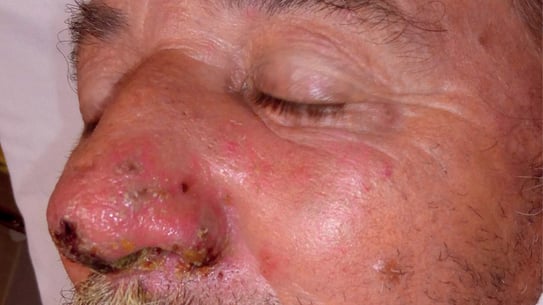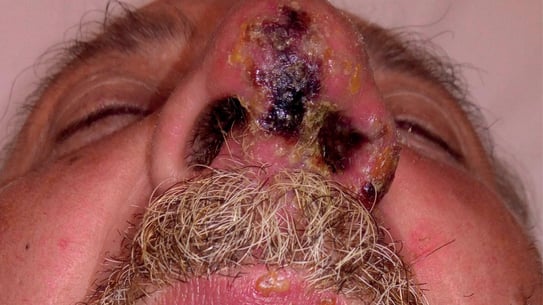0 professionals
Jean, 63 years old, Facial rash
Jean, 63 years old, Facial rash
URL copied
Written with the participation of FDVF (Future Dermatologists and Venereologists of France) interns.
Related topics


15 respondents
Question of 1
Shingles
Shingles
It is indeed shingles.
Let’s rule out differential diagnoses:
Ulcerated basal cell carcinoma
Wrong answer!
It was shingles.
Let’s rule out differential diagnoses:
Acute impetiginised eczema
Wrong answer!
It was shingles.
Let’s rule out differential diagnoses:
Erysipelas
Wrong answer!
It was shingles.
Let’s rule out differential diagnoses:
Antiviral treatment (oral valaciclovir or famciclovir, intravenous aciclovir):
Systematic local care:
Systematic symptomatic treatment:
Treating the secondary infection:
Treating postherpetic pain:
Preventive treatment = vaccination:
Create easily your professional account
I create my accountAccess exclusive business services unlimited
Access valuable features : audio listening & tools sharing with your patients
Access more than 150 product sheets, dedicated to professionals